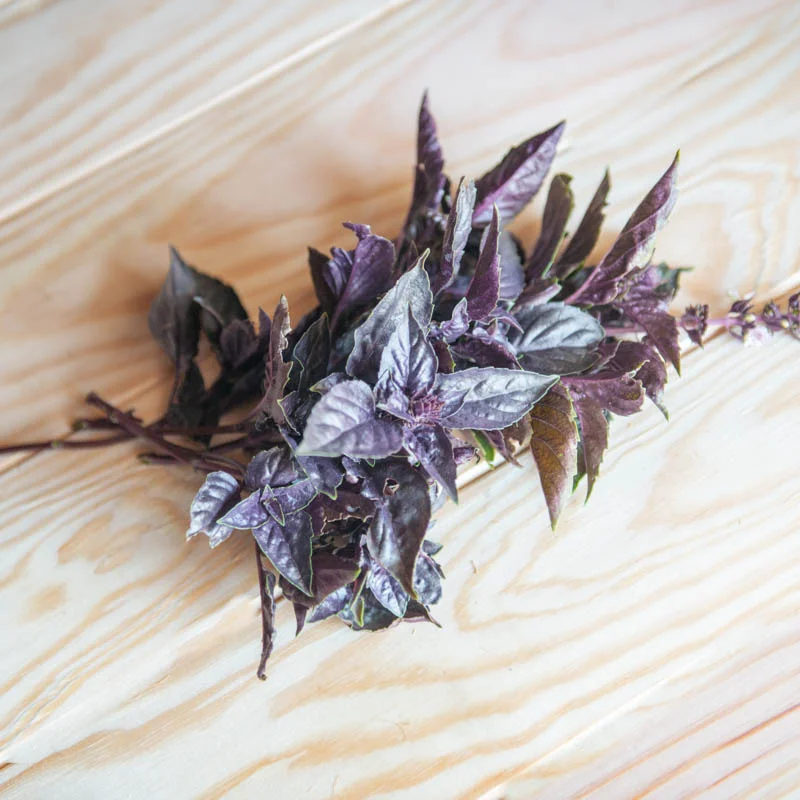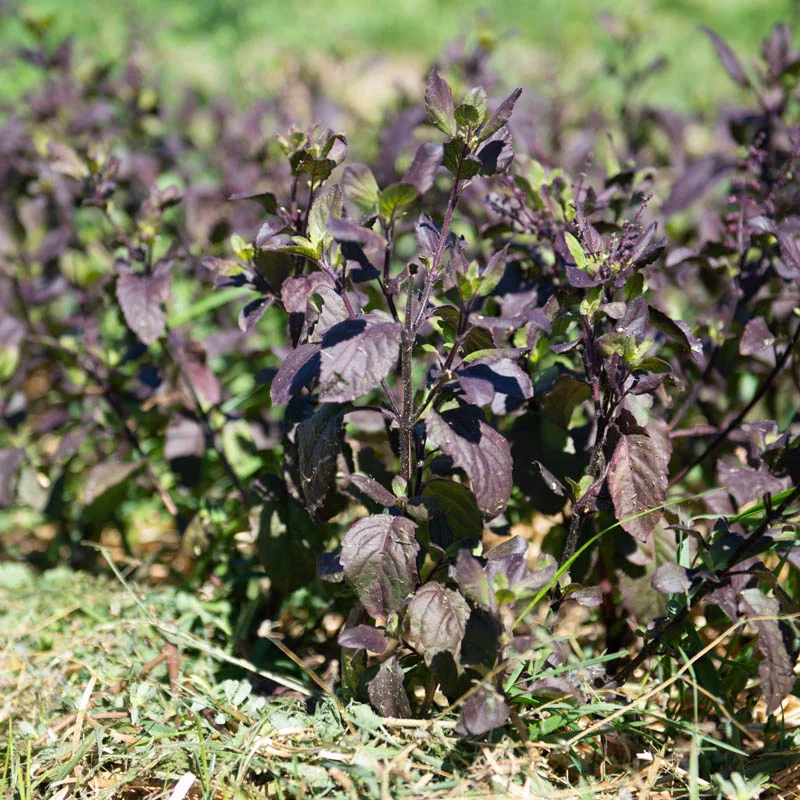Tulsi Krishna with Purple Leaves - Basil tulsi
This is an ecotype of Tulsi Krishna whose leaves and stems are more purple than green. Plants are 30 to 60 cm high, with a highly branched habit. Flowers are mauve or sometimes white. This Indian ecotype grows well in temperate regions.
To be discovered on the Kokopelli blog: "Tulsis and other Basilico-molecular Truths to free ourselves from the Terror of Pharmacy".
These products may also be of interest to you
in bucket
Sow in trays at temperatures between 18 and 20°C, under a well-lit shelter, 6 weeks before planting. Transplant into individual cups when plants have 4 to 5 leaves, or plant directly into warmed soil, spaced 25 to 30 cm apart. Take care not to over-water to avoid the risk of wilting.
March, April, May, June
June, July, August, September, October
in the ground
full sun
medium
potting soil, sandy, gravel, humus
drained, light, reheated
Ocimum tenuiflorum
200 seeds
fragrance, edible
From 30 to 60 cm
Tulsi is one of the most essential plants in India's three traditional systems of medicine and pharmacopoeia - Ayurveda, Unani and Siddha. For thousands of years, Tulsi has been used to treat bronchitis, diarrhoea, dysentery, arthritis, malaria, insect bites, eye problems, dermatological problems, colds, headaches, inflammations, gastric problems, poisoning and more. Tulsi also has properties for treating cancer, sterility, diabetes, microbial, bacterial and fungal infections, and heart problems. It is also an analgesic, anti-spasmodic and antipyretic. In short, it's an adaptogen, an antioxidant, an "elixir of life", reputed to prolong life. Its seeds are sometimes worn on the body as a protective charm: Tulsi is reputed to purify the aura.










